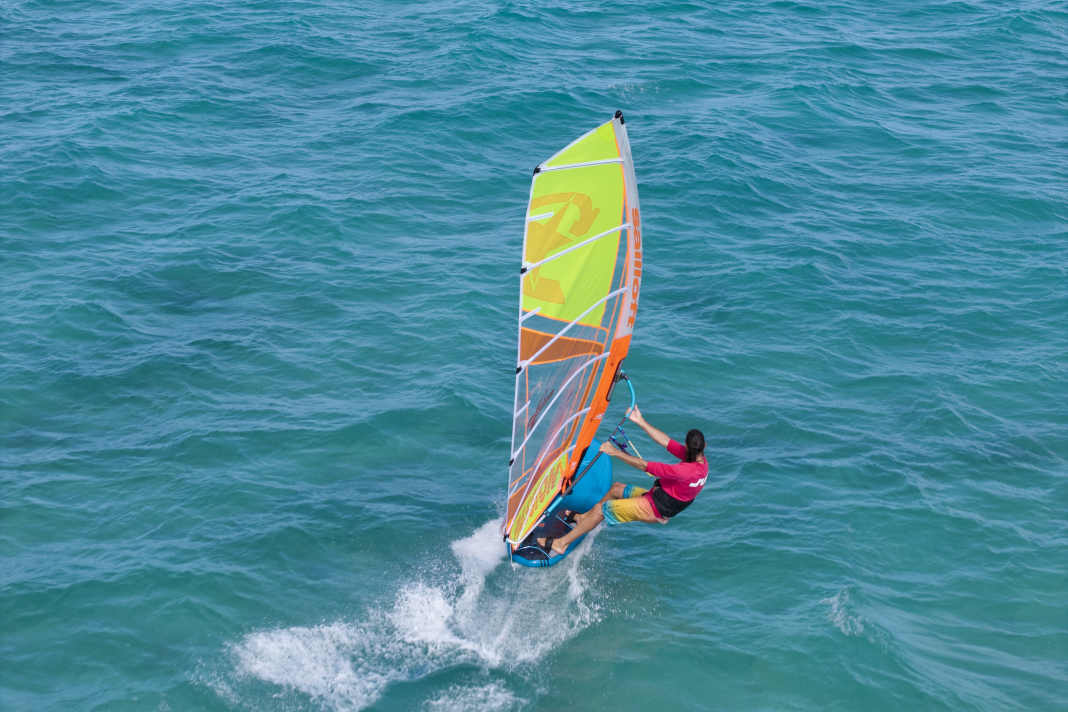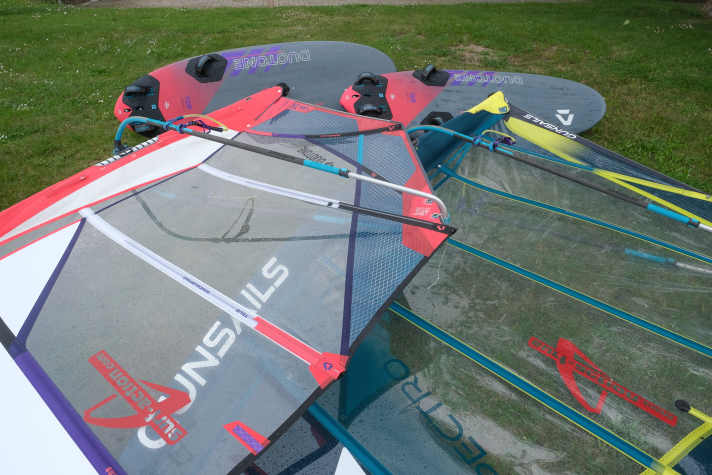





For some, large camber sails may seem like relics from the windsurfing past, but those who love the direct, powerful ride will appreciate them. Gliding over choppy water with a 7.8 camber sail requires tension and physical effort - and that's exactly what makes it so appealing. This intense experience of nature, the direct contact with the water and the fight against wind and waves cannot be replaced by any foil.
Even if many people switch to foil or wing, these sails retain their raison d'être. An enormous wind range can be covered with a single model - from around eight knots foiling, from 15 knots with a fin. Control is maintained up to well over 20 knots before it makes sense to switch to smaller sails.

Two or three cambers?
The range can be seen in the construction: while some sails such as the Duotone or Goya require moderate trim forces, models such as the Point-7 or NeilPryde V8 are significantly more force-intensive. The trim has a significant influence on the profile and performance. Sails with high luff tension offer maximum planing power without pressure point migration - ideal for speed and control.
Manufacturers are increasingly reducing their variety of models. Instead of separate two- and three-camber models, there is often one model with combined characteristics. The number of cambers therefore says little about the handling: a Duotone with three cambers can be softer than a NeilPryde with two.
Big differences in the driving experience
The sails are noticeably different on the water. You can find out which model has which characteristics in surf 6/2025, on sale from 27 May. We'll also reveal whether the eye-catching North sail with its air camber is the wild card! Ultimately, this sail group offers everything: from sporty and tight to comfortable - with character, variety and a wide wind range.
At this point, you will find external content that complements the article. You can display and hide it with a click.
